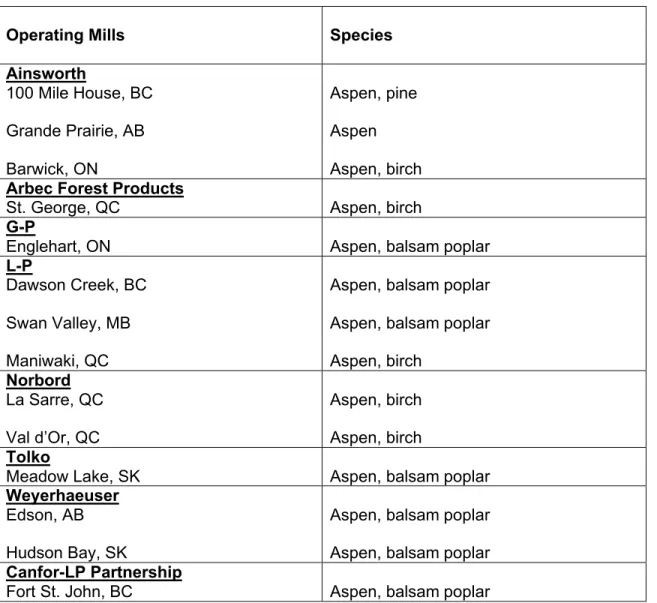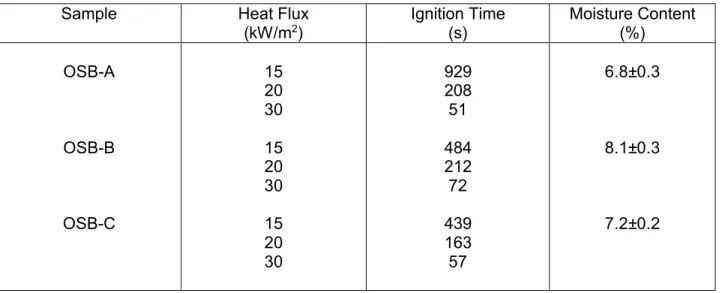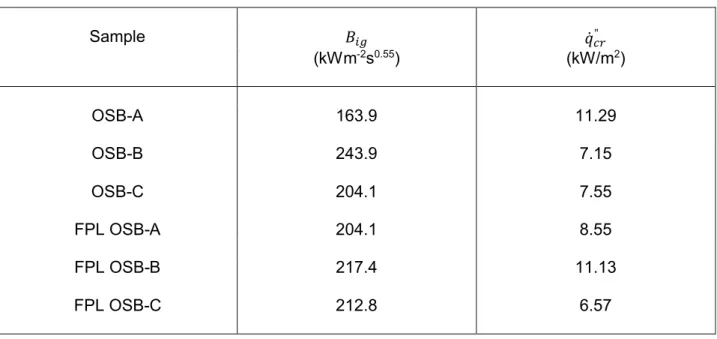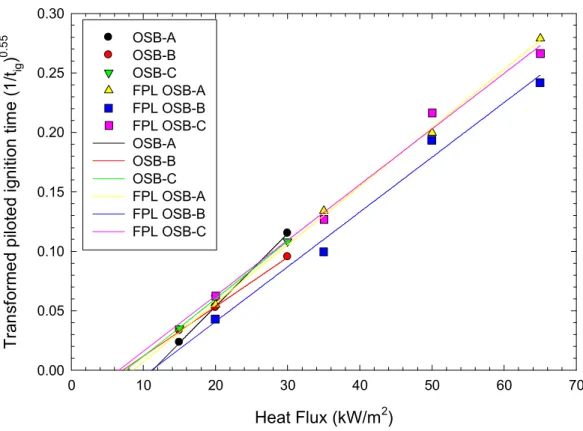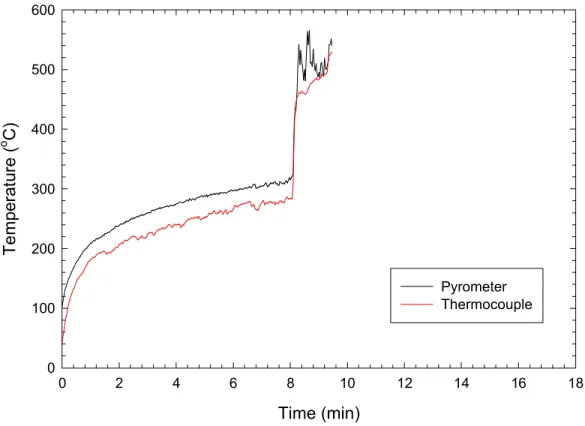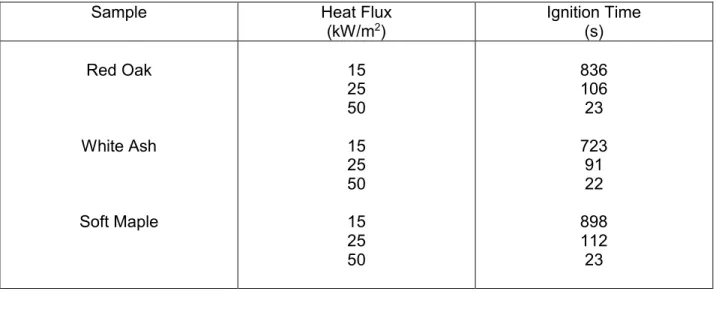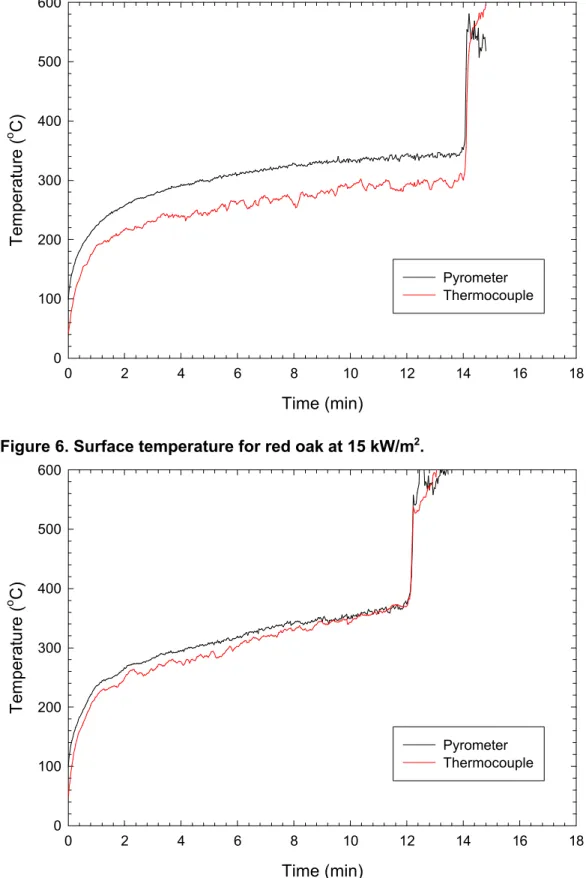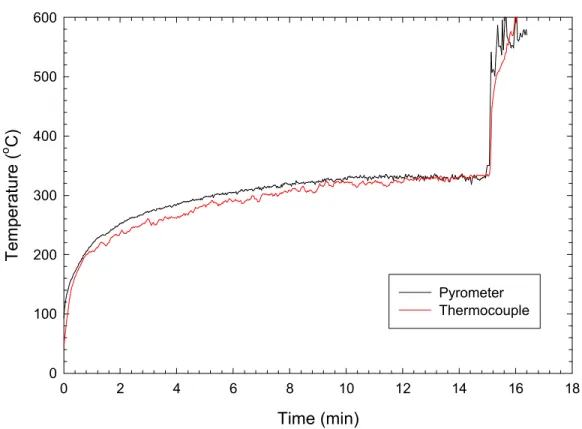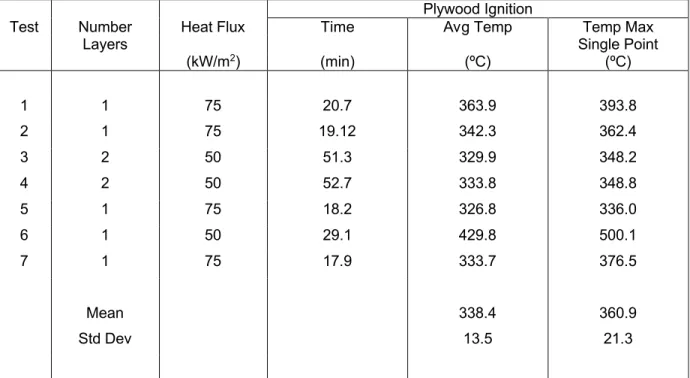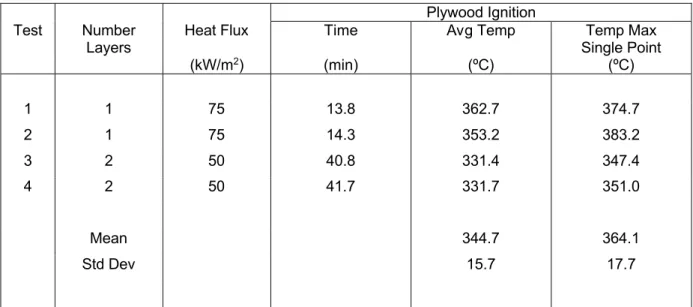Publisher’s version / Version de l'éditeur:
Vous avez des questions? Nous pouvons vous aider. Pour communiquer directement avec un auteur, consultez la première page de la revue dans laquelle son article a été publié afin de trouver ses coordonnées. Si vous n’arrivez Questions? Contact the NRC Publications Archive team at
PublicationsArchive-ArchivesPublications@nrc-cnrc.gc.ca. If you wish to email the authors directly, please see the first page of the publication for their contact information.
https://publications-cnrc.canada.ca/fra/droits
L’accès à ce site Web et l’utilisation de son contenu sont assujettis aux conditions présentées dans le site
LISEZ CES CONDITIONS ATTENTIVEMENT AVANT D’UTILISER CE SITE WEB.
Client Report (National Research Council of Canada. Construction), 2014-12
READ THESE TERMS AND CONDITIONS CAREFULLY BEFORE USING THIS WEBSITE. https://nrc-publications.canada.ca/eng/copyright
NRC Publications Archive Record / Notice des Archives des publications du CNRC :
https://nrc-publications.canada.ca/eng/view/object/?id=ddbfea28-e676-4970-82f4-37000479675a https://publications-cnrc.canada.ca/fra/voir/objet/?id=ddbfea28-e676-4970-82f4-37000479675a
NRC Publications Archive
Archives des publications du CNRC
For the publisher’s version, please access the DOI link below./ Pour consulter la version de l’éditeur, utilisez le lien DOI ci-dessous.
https://doi.org/10.4224/21274570
Access and use of this website and the material on it are subject to the Terms and Conditions set forth at
Solutions for mid-rise wood construction: ignition of selected wood
building materials: report to Research Consortium for Wood and
Wood-Hybrid Mid-Rise Buildings
N A T I O N A L R E S E A R C H C O U N C I L C A N A D A
REPORT TO RESEARCH CONSORTIUM
FOR WOOD AND WOOD-HYBRID
MID-RISE BUILDINGS
Solutions for Mid-Rise Wood Construction:
Ignition of Selected Wood Building
Materials
CLIENT REPORT: A1-100035-01.12
REPORT TO RESEARCH CONSORTIUM FOR WOOD AND
WOOD-HYBRID MID-RISE BUILDINGS
Solutions for Mid-Rise Wood Construction:
Ignition of Selected Wood Building Materials
M. Bijloos, G.D. Lougheed, J.Z. Su and N. Bénichou
Report No.
A1-100035-01.12
Report date: December 31, 2014
Contract No. B-7000 (A1-100035)
Prepared for Canadian Wood Council
FPInnovations
Régie du bâtiment du Québec
HER MAJESTY THE QUEEN IN RIGHT OF ONTARIO as represented by
the Minister of Municipal Affairs and Housing
20 pages
This report may not be reproduced in whole or in part without the written consent of both the client and the National Research Council of Canada.
TABLE OF CONTENTS
Contents
1 Introduction ...1
2 Wood Ignition...2
3 Experimental Results ...3
3.1 Ignitability of Canadian OSB ...3
3.2 Torrefied Wood ...10
3.3 Plywood Ignition in Cone Calorimeter Tests with Encapsulation Materials ...14
4 Criteria for Encapsulation Materials...18
5 Summary ...19
6 Acknowledgments...20
7 References ...20
LIST OF FIGURES Figure 1. Ignition plots for OSB samples. ...8
Figure 2. Surface temperature for OSB-A at 15 kW/m2. ...8
Figure 3. Surface temperature for OSB-B at 15 kW/m2. ...9
Figure 4. Surface temperature for OSB-C at 15 kW/m2. ...9
Figure 5. Ignition plots for torrefied wood samples. ...13
Figure 6. Surface temperature for red oak at 15 kW/m2...13
Figure 7. Surface temperature for white ash at 15 kW/m2. ...14
Figure 8. Surface temperature for soft maple at 15 kW/m2. ...14
LIST OF TABLES Table 1. Wood species used in Canadian manufactured OSB (2011). ...5
Table 2. Ignition times for Canadian manufactured OSB specimens. ...6
Table 3. Ignition times for US-manufactured OSB specimens. ...6
Table 4. Ignition constants (Equation (1)) for OSB samples. ...7
Table 5. Ignition temperatures, Tig, for Canadian manufactured OSB...7
Table 6. Ignition times for torrefied wood specimens...12
Table 7. Ignition constants (Equation (1)) for torrefied wood. ...12
Table 8. Ignition temperatures, Tig, for torrefied wood samples. ...12
Table 9. Temperature at plywood ignition for tests with 12.7 mm thick Type X gypsum board. .16 Table 10. Temperature at plywood ignition for tests with 15.9 mm thick Type X gypsum board.16 Table 11. Temperature at plywood ignition for tests with 12.7 mm thick cement board. ...17
Table 12. Temperature at plywood ignition for tests with gypsum-concrete...17
SOLUTIONS FOR MID-RISE WOOD CONSTRUCTION: IGNITION OF SELECTED WOOD BUILDING MATERIALS
M. Bijloos, G.D. Lougheed, J.Z. Su and N. Bénichou 1 INTRODUCTION
The acceptable solutions provided in the 2010 National Building Code (NBC) Division B [1] limits the use of combustible (wood) construction based on building height. For example, for Group C (Residential), Group D (Business and Personal Services) and Group E (Mercantile) occupancies, combustible construction can be used up to 4 storeys, and up to 2 storeys for Group A – Division 2 (Assembly) occupancies. In addition to the building height limitation, there are also building area limitations in the 2010 NBC for the use of combustible construction for these occupancies. For buildings that exceed the height and area requirements for combustible construction, the prescriptive requirements in the 2010 NBC require that noncombustible construction be used for the primary structural elements.
The prescriptive construction requirements for fire safety and protection of buildings, which are dependent upon the building size and occupancy type, are provided in Subsection 3.2.2 of the 2010 NBC. This includes the identification of the buildings for which noncombustible
construction is required. The intent of the prescriptive requirements for noncombustible
construction as they relate to the NBC fire safety/fire protection of building objectives is “to limit the probability that combustible construction materials within a storey of a building will be involved in a fire, which could lead to the growth of fire, which could lead to the spread of fire within the storey during the time required to achieve occupant safety and for emergency responders to perform their duties, which could lead to harm to persons/damage to the building”.
The 2010 NBC defines noncombustible construction as “that type of construction in which a degree of fire safety is attained by use of noncombustible construction materials for structural members and other building assemblies” [1]. Article 3.1.5.1 requires that a building or part of a building required to be of noncombustible construction be constructed using noncombustible materials. The intent of this requirement, as it relates to the NBC fire safety/fire protection of building objectives, is “to limit the probability that construction materials will contribute to the growth and spread of fire, which would lead to harm to persons/damage to the building”. The NBC does permit, as exceptions, an extensive use of combustible materials in buildings otherwise required to have their primary structural elements to be of noncombustible
construction. The allowed materials and associated limitations are primarily provided in Articles 3.1.5.2 to 3.1.5.21. Generally, the combustible elements permitted relate to interior finishes, gypsum board, combustible roofing materials, combustible plumbing fixtures, cabling, protected insulation, flooring, combustible glazing, combustible cladding systems, non-loadbearing framing elements in partitions, stairs in dwellings, and trim and millwork, among others. Divisions B of the NBC (the “acceptable solutions” portion of the Code) generally does not permit combustible materials to be used for the primary structural elements in buildings required to be of noncombustible construction. In the Scoping Study [2] for mid-rise and hybrid buildings, it was suggested that an alternative solution using wood construction may be developed to meet the intent of the prescriptive “noncombustibility” requirement for mid-rise (and taller) buildings. As one approach, encapsulation materials could be used to protect the combustible (wood)
structural materials for a period of time in order to delay the effects of the fire on the combustible structural elements, including delay of ignition. In delaying ignition, any effects of the
combustion of the combustible structural elements on the fire severity can be delayed. In some cases, and depending upon the amount of encapsulating material used (e.g. number of layers), ignition of the elements might be avoided completely. This scenario would primarily depend upon the fire event and the actual fire performance of the encapsulating materials used. A research project, Wood and Wood-Hybrid Midrise Buildings, was undertaken to develop information to be used as the basis for alternative/acceptable solutions for mid-rise construction using wood structural elements. A key parameter in the use of encapsulation materials to protect wood structural elements is the ignition temperature of wood. In this report, a brief overview of wood ignition is provided. In addition, the results of limited cone calorimeter testing to determine the ignition characteristics of OSB and torrefied wood are discussed. The ignition temperature of plywood used as a substrate for cone calorimeter tests with encapsulation materials is also provided.
2 WOOD IGNITION
Extensive research has been conducted on the ignition of wood-based building materials. The results of this research are well documented in various references including [3]. In this report, the ignition properties of wood-based building materials of particular relevance to the use of encapsulation materials to delay ignition are noted.
Wood can begin to char at relatively low temperatures if exposed for long durations. However, for high heat flux exposures typical of fully-developed fires and exposures in fire resistance furnaces, wood begins to char between 288C and 300C [3, 4]. This is the basis for the
European temperature rise criteria for encapsulation materials, which assumes that the average temperature rise over the whole exposed surface of the protected building element is should be limited to 250ºC, and the maximum temperature rise at any point on that surface should not exceed 270ºC.
Wood pyrolysis involves competing mechanisms. For temperatures less than 300C, charring is favored; and, for those greater than 300C, gasification is favored. As such, for lower
temperatures, a glowing ignition is favored [3].
At higher heat fluxes from a localized heat source, specimens will ignite into a flaming mode. This type of ignition is known as piloted ignition. A second type of ignition is autoignition, which occurs when a substance is raised uniformly in temperature. Since, for piloted ignition, there is a secondary source of energy (a flame, a spark a hot surface, it will occur at lower temperatures than autoignition and is the type of ignition discussed in this report.
Janssens determined that for oven-dried specimens the piloted ignition temperature for
hardwoods was 300 - 311C and 349 – 364C for softwood [3]. The difference in piloted ignition temperature with the two types of wood is due to the difference in composition of hemicellulose, cellulose and lignin. Softwoods have a smaller fraction of hemicellulose (lowest ignition
temperature) and higher fraction of lignin (highest ignition temperature) resulting in a higher ignition temperature for softwoods.
The temperature ranges for the piloted ignition of the two types of wood was based on oven-dried specimens. Janssens determined that the ignition temperature rises by 2C for each
percent moisture content increase [3]. Thus for room-conditioned specimens with a moisture content of 9-12%, the piloted ignition temperature will increase by 18 - 24C.
3 EXPERIMENTAL RESULTS
It was not intended as part of the Wood Mid-rise Project to undertake extensive testing on the ignition of wood as this subject has been investigated extensively and the results are
documented in various references including [3]. However, limited testing was conducted in three areas:
1. Ignitability of OSB produced in Canada. 2. Ignitability of torrefied wood samples.
3. Determination of ignition temperature of plywood used as a substrate for tests with encapsulation materials.
3.1 Ignitability of Canadian OSB
The Canadian manufacturers of OSB and the wood species used at their various Canadian mills are summarized in Table 1. The three primacy species used for OSB are aspen (Populus
tremuloides), birch (genus Betula) and balsam poplar (Populus balsamifera), with aspen used at all the OSB mills. Birch is used in addition to aspen at most mills in Quebec and Ontario, and balsam poplar is used at mills on the Prairies and in BC.
Three samples of Canadian manufactured OSB were obtained, with two samples (Samples B and C) from mills using aspen and birch and 1 sample (Sample A) from a mill using aspen and balsam poplar.
Cone calorimeter tests were conducted using specimens from each sample with heat flux exposures of 15, 20 and 30 kW/m2. These tests were conducted in general conformance with ISO 5660 [5], including the specimen holder and the measurements specified in the test standard. The specimens were 100 mm x 100 mm and were conditioned in a room at an ambient temperature of 23 ± 3C and relative humidity of 50 ± 5%. The objective of these tests was to provide preliminary data on variation in ignition characteristics of OSB.
The ignition times for the three Canadian OSB samples are summarized in Table 2. There is also data available for three samples of US-manufactured OSB for cone calorimeter tests conducted by the Forest Products Laboratory [6]. The ignition times are provided in Table 3. Samples FPL OSB-A and FPL OSB-C were manufactured using mixed hardwood species, and Sample FPL OSB-B used Southern Pine.
A method was developed by Janssens for use in correlating piloted ignition time data for tests conducted using radiant exposures [3]. For thermally thick materials, the equation describing piloted ignition time data is:
.
=
̇" ̇" (1)where
̇" = exposing heat flux, kW/m2
̇" = critical heat flux for the material, kW/m2(intercept of linear fit to transformed ignition time data with axis)
= inverse of the slope of the linear fit to transformed ignition time data for material, kWm-2s0.55
The material constants ̇" and are characteristic of the material tested. However, they have
no physical meaning.
The linear fits to the transformed piloted ignition time data for the OSB samples are shown in Figure 1, and the ignition constants for each sample are provided in Table 4. Some general comments regarding the results are:
1. The FPL data indicates there is a difference in the ignition characteristics for the two products manufactured using mixed hardwoods compared with the softwood material (southern pine). The difference is consistent with the general trend that hardwood-based materials are easier to ignite than softwood-based materials.
2. The Canadian OSB samples from mills using aspen and birch (OSB-B and OSB-C) had comparable ignition characteristics and were similar to those for to US products
manufactured with mixed hardwoods.
3. The Canadian OSB sample from a mill using aspen and balsam poplar (OSB-A) had some differences in ignition characteristics. With low radiant fluxes, this material was more difficult to ignite and was consistent with a softwood-based material. However, with higher radiant exposures, it was easier to ignite and was comparable to the hardwood-based materials.
The ignition temperature for materials can be determined using cone calorimeter tests to establish the minimum heat flux for ignition, ̇" , However, sufficient tests were not conducted with the OSB samples to establish the minimum heat flux. For wood and wood-based materials, a ̇" of 12.5 kW/m2is typically used for design purposes [3] and the piloted ignition
temperature is approximately 346C. The ignition time for heat fluxes at or near the minimum heat flux will be very long.
Another approach to measuring the ignition temperature is to measure the surface temperature of the exposed specimen. For the Canadian OSB tests with a heat flux exposure of 15 kW/m2, the surface temperature was measured using a thermocouple and a pyrometer. The surface temperatures measured for samples OSB-A, OSB-B and OSB-C are shown in Figure 2, Figure 3 and Figure 4, respectively.
For all tests, the surface temperatures measured using the pyrometer were higher than those measured using the thermocouple. The surfaces of the Canadian OSB specimens were rough. As such, it was difficult to ensure good contact between the thermocouple and the material surface, which would lead to lower temperature measurements.
The temperatures measured by the two devices were used to estimate the ignition temperature of the Canadian OSB. The results are provided in Table 5. The ignition temperatures estimated using the surface temperatures measured using the pyrometer are higher than the estimates based on the thermocouple data. The ignition temperatures based on the pyrometer data are also consistent with the ignition temperature based on a ̇" of 12.5 kW/m2, as well as ignition temperatures referenced in the literature for wood and wood-based materials [3].
Limited testing was conducted on the OSB materials in this research. This testing indicated that overall the ignition characteristics are similar for the Canadian products and that they are comparable to those produced in the US. However, the variations in composition of the OSB products can produce some differences in ignition characteristics. In particular, hardwood-based products will be easier to ignite than those using softwoods.
Table 1. Wood species used in Canadian manufactured OSB (2011).
Operating Mills Species
Ainsworth 100 Mile House, BC Grande Prairie, AB Barwick, ON Aspen, pine Aspen Aspen, birch Arbec Forest Products
St. George, QC Aspen, birch
G-P
Englehart, ON Aspen, balsam poplar
L-P
Dawson Creek, BC Swan Valley, MB Maniwaki, QC
Aspen, balsam poplar Aspen, balsam poplar Aspen, birch Norbord La Sarre, QC Val d’Or, QC Aspen, birch Aspen, birch Tolko
Meadow Lake, SK Aspen, balsam poplar
Weyerhaeuser Edson, AB Hudson Bay, SK
Aspen, balsam poplar Aspen, balsam poplar Canfor-LP Partnership
Table 2. Ignition times for Canadian manufactured OSB specimens.
Sample Heat Flux Ignition Time Moisture Content
(kW/m2) (s) (%) OSB-A 15 929 6.8±0.3 20 208 30 51 OSB-B 15 484 8.1±0.3 20 212 30 72 OSB-C 15 439 7.2±0.2 20 163 30 57
Table 3. Ignition times for US-manufactured OSB specimens.
Sample Heat Flux Ignition Time
(kW/m2) (s) FPL OSB-A 20 194.8 35 36.6 50 18.7 65 10.2 FPL OSB-B 20 305.7 35 66.3 50 19.8 65 13.2 FPL OSB-C 20 156.5 35 42.8 50 16.2 65 11.1
Table 4. Ignition constants (Equation (1)) for OSB samples. Sample ̇" (kWm-2s0.55) (kW/m2) OSB-A 163.9 11.29 OSB-B 243.9 7.15 OSB-C 204.1 7.55 FPL OSB-A 204.1 8.55 FPL OSB-B 217.4 11.13 FPL OSB-C 212.8 6.57
Table 5. Ignition temperatures, Tig, for Canadian manufactured OSB.
Sample Ignition time* Tig Tig Tig
Thermocouple Pyrometer ( ̇" =12.5 kW/m2) (s) (C) (C) (C) OSB-A 929 301.1 358.6 346 OSB-B 484 283.0 331.0 346 OSB-C 439 316.8 338.6 346 *Heat flux of 15 kW/m2.
Figure 1. Ignition plots for OSB samples.
Figure 2. Surface temperature for OSB-A at 15 kW/m2.
Heat Flux (kW/m2) 0 10 20 30 40 50 60 70 T ra n sf or m e d p ilo te d ig ni tio n tim e (1 /tig ) 0 .5 5 0.00 0.05 0.10 0.15 0.20 0.25 0.30 OSB-A OSB-B OSB-C FPL OSB-A FPL OSB-B FPL OSB-C OSB-A OSB-B OSB-C FPL OSB-A FPL OSB-B FPL OSB-C Time (min) 0 2 4 6 8 10 12 14 16 18 T e m pe ra tu re ( o C ) 0 100 200 300 400 500 600 Pyrometer Thermocouple
Figure 3. Surface temperature for OSB-B at 15 kW/m2.
Figure 4. Surface temperature for OSB-C at 15 kW/m2. Time (min) 0 2 4 6 8 10 12 14 16 18 T e m pe ra tu re ( o C ) 0 100 200 300 400 500 600 Pyrometer Thermocouple Time (min) 0 2 4 6 8 10 12 14 16 18 T em pe ra tu re ( o C ) 0 100 200 300 400 500 600 Pyrometer Thermocouple
3.2 Torrefied Wood
Cone calorimeter tests were conducted for specimens from three torrefied wood samples. The labels on the samples were red oak, white ash and soft maple.
Torrefied wood is produce by heating the wood at a very high temperature (from 190 to 240°C), in a torrefaction kiln (autoclave) at controlled atmosphere and low in oxygen. The length of the process, as well as the temperature degree sustained during a determined period, depends on the torrefied specie and the desired colour. The literature indicates that torrefaction will drive off volatiles and make it harder for the wood to reach ignition [3].
Three specimens were prepared for each torrefied wood sample and cone calorimeter tests conducted with exposures of 15, 25 and 50 kW/m2. These tests were conducted in general conformance with ISO 5660 [5], including the specimen holder and the measurements specified in the test standard. The specimens were 100 mm x 100 mm and were conditioned in a room at an ambient temperature of 23 ± 3C and relative humidity of 50 ± 5%. The objective of these tests was to provide preliminary data on the ignition characteristics of torrefied wood.
The ignition times for the three torrefied wood samples are summarized in Table 6 and the linear fits to the transformed piloted ignition time data are provided in Figure 5. The material ignition constants for each sample are provided in Table 7. Similar piloted ignition times and ignition characteristics were obtained for the three samples of torrefied wood. The results are also comparable to those determined for the OSB samples manufactured using hardwoods. For the torrefied wood specimens tested with exposure of 15 kW/m2, the surface temperature was measured using a thermocouple and a pyrometer. The surface temperatures measured for the samples of red oak, white ash and soft maple are shown in Figure 6, Figure 7 and Figure 8, respectively.
For all tests, the surface temperatures measured using the pyrometer were initially higher than those measured using the thermocouple. For the tests with the white ash and soft maple, the two measurements were comparable near the end of the test (after 10 min). Because of the surface roughness of the samples, it was difficult to ensure good contact between the
thermocouple and the material surface, which would lead to lower temperature measurements. The temperatures measured by the two devices were used to estimate the ignition temperature of the torrefied wood. The results are provided in Table 8. The ignition temperature estimated using the surface temperature measured using the pyrometer is higher than the estimate based on the thermocouple data, for the red oak specimen. For the other two materials, the ignition temperatures determined using the pyrometer are comparable to but higher than the estimates using the thermocouple data.
The ignition temperatures based on the pyrometer data are also consistent with the ignition temperature based on a ̇" of 12.5 kW/m2as well as ignition temperature in the literature for wood and wood-based materials for the red oak and soft maple specimens [3].
The ignition temperature for the white ash specimen is higher than for the other two torrefied materials. However, it is still consistent with the ignition temperatures measured for wood.
Limited testing was conducted on torrefied wood samples to determine ignition characteristics. Samples without pre-charring were not available for direct comparison. However, the literature indicates that pre-charring will drive off volatiles and make it harder for wood to reach ignition [3]. Overall the ignition characteristics for the torrefied wood samples are consistent with other wood materials.
Table 6. Ignition times for torrefied wood specimens.
Sample Heat Flux Ignition Time
(kW/m2) (s) Red Oak 15 836 25 106 50 23 White Ash 15 723 25 91 50 22 Soft Maple 15 898 25 112 50 23
Table 7. Ignition constants (Equation (1)) for torrefied wood.
Sample ̇"
(kWm-2s0.55) (kW/m2)
Red Oak 232.6 8.47
White Ash 227.3 7.07
Soft Maple 227.3 8.00
Table 8. Ignition temperatures, Tig, for torrefied wood samples.
Sample Piloted Ignition Time* Tig Tig Tig Thermocouple Pyrometer ( ̇" =12.5 kW/m2) (s) (C) (C) (C) Red Oak 836 310.6 347.4 346 White Ash 723 373.8 380.8 346 Soft Maple 898 332.5 342.5 346 *Heat flux of 15 kW/m2.
Figure 5. Ignition plots for torrefied wood samples.
Figure 6. Surface temperature for red oak at 15 kW/m2.
Time (min) 0 2 4 6 8 10 12 14 16 18 T em pe ra tu re ( o C ) 0 100 200 300 400 500 600 Pyrometer Thermocouple Time (min) 0 2 4 6 8 10 12 14 16 18 T em pe ra tu re ( o C ) 0 100 200 300 400 500 600 Pyrometer Thermocouple
Figure 7. Surface temperature for white ash at 15 kW/m2.
Figure 8. Surface temperature for soft maple at 15 kW/m2.
3.3 Plywood Ignition in Cone Calorimeter Tests with Encapsulation Materials
A series of cone calorimeter tests were conducted using four encapsulation materials to protect a plywood substrate. A complete description of the test setup and parameters for that series of tests is provided in Reference [7].
In the later stages of those tests, the encapsulation materials became porous and visible flames were observed on the exposed surface of the specimen. In all tests, five thermocouples were located at the interface between the encapsulation materials and the plywood substrate. The average and maximum single point temperatures measured by the five thermocouples were used to determine the ignition temperature for the plywood substrate.
Table 9 provides the maximum single-point and average ignition temperatures determined for test specimens with 1 and 2 layers of 12.7 mm thick Type X gypsum board as the encapsulation material. Overall, the ignition temperature results are consistent except for Test 6. There was not a clear indication of flames for this test specimen. In addition, there was limited or no heat output during the test. The reason for this is not known and the results from this test are not included in the estimates for the average and standard deviation for the ignition temperatures.
Time (min) 0 2 4 6 8 10 12 14 16 18 T em pe ra tu re ( o C ) 0 100 200 300 400 500 600 Pyrometer Thermocouple
Table 10, Table 11 and Table 12 provide the maximum single-point and average ignition temperatures for tests with 15.9 mm thick Type X gypsum board, 12.7 mm thick cement board, and gypsum-concrete of two different thicknesses as the encapsulation materials, respectively. The largest variation in the estimated ignition temperatures was found in the series of tests using 12.7 mm thick Type X gypsum board as the encapsulation material. This is reasonable as this series of tests had the most variations in test setup and test conditions. The test setup and conditions varied included exposure heat flux, number of layers of encapsulation material, holder size, insulation on the sides of the specimen and insulation under the plywood substrate. The lowest variation in the estimated ignition temperatures was found in the tests using
gypsum-concrete, for which the only test-to-test variation was the thickness of the encapsulation material. All other setup parameters were the same for all tests using gypsum-concrete. The results indicate that the thickness of the encapsulation material did not affect the ignition temperature estimates.
There are indications that other parameters that were varied in the tests may have had an impact on the estimates of the plywood ignition temperature. However, insufficient tests were conducted to determine the effect(s), if any, of the various test setups and conditions used in the testing.
The mean ignition temperatures and the standard deviations are summarized in Table 13 for each encapsulation material. The mean ignition temperatures and standard deviation for all the tests is also provided. The results indicate that the average temperature for ignition of the plywood substrate is 338.90 ± 12.81C and the maximum single-point ignition temperature is 361.63 ± 14.01C.
The ignition temperature of the material used for the plywood substrate was not directly measured. However, the estimates of its ignition temperature measured in the tests with encapsulation materials are consistent with the literature results for wood and wood-based softwood materials [3].
Table 9. Temperature at plywood ignition for tests with 12.7 mm thick Type X gypsum board.
Plywood Ignition
Test Number Heat Flux Time Avg Temp Temp Max
Layers Single Point
(kW/m2) (min) (ºC) (ºC) 1 1 75 20.7 363.9 393.8 2 1 75 19.12 342.3 362.4 3 2 50 51.3 329.9 348.2 4 2 50 52.7 333.8 348.8 5 1 75 18.2 326.8 336.0 6 1 50 29.1 429.8 500.1 7 1 75 17.9 333.7 376.5 Mean 338.4 360.9 Std Dev 13.5 21.3
Avg Temp – Average temperature at gypsum board/plywood interface at plywood ignition. Temp Max Single Point – Maximum single-point temperature at gypsum board/plywood
interface at plywood ignition.
Table 10. Temperature at plywood ignition for tests with 15.9 mm thick Type X gypsum board.
Plywood Ignition
Test Number Heat Flux Time Avg Temp Temp Max
Layers Single Point
(kW/m2) (min) (ºC) (ºC) 1 1 75 21.7 321.6 358.6 2 1 75 22.1 328.4 355.7 3 2 50 61.7 322.1 365.4 4 2 50 62.3 332.9 363.3 Mean 326.3 360.8 Std Dev 5.4 4.4
Avg Temp – Average temperature at gypsum board/plywood interface at plywood ignition. Temp Max Single Point – Maximum single-point temperature at the gypsum board/plywood
Table 11. Temperature at plywood ignition for tests with 12.7 mm thick cement board.
Plywood Ignition
Test Number Heat Flux Time Avg Temp Temp Max
Layers Single Point
(kW/m2) (min) (ºC) (ºC) 1 1 75 13.8 362.7 374.7 2 1 75 14.3 353.2 383.2 3 2 50 40.8 331.4 347.4 4 2 50 41.7 331.7 351.0 Mean 344.7 364.1 Std Dev 15.7 17.7
Avg Temp – Average temperature at cement board/plywood interface at plywood ignition. Temp Max Single Point – Maximum single-point temperature at the cement board/plywood
interface at plywood ignition.
Table 12. Temperature at plywood ignition for tests with gypsum-concrete.
Plywood Ignition
Test Thickness Heat Flux Time Avg Temp Temp Max
(mm) Single Point (kW/m2) (min) (ºC) (ºC) 1 25 50 36.4 350.1 357.1 2 25 50 37.4 348.0 359.4 3 39 50 58.3 346.4 366.6 4 39 50 55.3 341.4 357.9 Mean 346.5 360.3 Std Dev 3.7 4.3
Avg Temp – Average temperature at gypsum-concrete/plywood interface at plywood ignition. Temp Max Single Point – Maximum single-point temperature at the gypsum-concrete interface
Table 13. Plywood ignition temperatures. Encapsulation
Material
Average Ignition Temperature
Single-Point Ignition Temp Mean (C) Std Dev (C) Mean (C) Std Dev (C)
12.7 mm Type X gypsum board 338.4 13.5 360.9 21.3
15.9 mm Type X gypsum board 326.3 5.4 360.8 4.4
12.7 mm cement board 344.7 15.7 364.1 17.6
Gypsum-concrete 346.5 3.7 360.3 4.3
All materials 338.9 12.8 361.6 14.0
4 CRITERIA FOR ENCAPSULATION MATERIALS
Three criteria for potential use in standard tests for encapsulation materials are being evaluated in this project:
1. Criteria 1. The average temperature rise over the whole exposed surface of the protected building element is limited to 140ºC, and the maximum temperature rise at any point on that surface does not exceed 180ºC.
2. Criteria 2. The average temperature rise over the whole exposed surface of the protected building element is limited to 195ºC, and the maximum temperature rise at any point on that surface does not exceed 250ºC.
3. Criteria 3. The average temperature rise over the whole exposed surface of the protected building element is limited to 250ºC, and the maximum temperature rise at any point on that surface does not exceed 270ºC.
The first two criteria are based on temperature increase criteria used in CAN/ULC-S101 [8] and CAN/ULC-S124 [9], respectively. Criteria 3 are used in European standards for the evaluation of encapsulation materials and are based on a charring temperature for structural timber of 300ºC [4].
The stated intent of the requirement in the NBC that limits the use of combustible structural elements in larger buildings is to limit the impact of a fire beyond its area of origin. By using encapsulation materials to protect the structural elements, the time at which the fire will begin to char or ignite the structural element can be delayed or eliminated, depending on the fire event. A fire will begin to have an impact on the structural element once the interface between the encapsulation material and the combustible structural element reaches the element’s charring temperature. With extended exposure, the structural strength of the loadbearing element will be affected, leading to collapse and fire spread. Since Criteria 3 is based on the charring
temperature of wood, it provides a good estimate of how long the effects of the fire on the structural element will be delayed.
Sufficient pyrolysis gases will not be produced from the combustible structural element until it reaches its ignition temperature. However, there are a number of factors that affect the ignition temperature for wood, including the type of wood (hardwood/softwood), wood specie and relative moisture content. As such, it can be difficult to determine criteria for evaluating the performance of encapsulation materials based on the ignition temperature of wood.
Criterion 3 provides a conservative technically-based estimate for the delay in the effect of a fire on the structural element, as well as the delay in the ignition of the structural element.
5 SUMMARY
A key parameter in the use of encapsulation materials to protect wood structural elements is the ignition temperature of wood.
A brief overview of wood ignition is provided in the report. Some of the primary parameters are: 1. Wood can begin to char at 288C.
2. The ignition temperature of wood depends on a number of factors, including the type of wood (hardwood or softwood), wood specie and relative moisture content.
3. For hardwoods, the piloted ignition temperature for oven-dried specimen is 300 - 311C. 4. For softwoods, the piloted ignition temperature for oven-dried specimen is 349 – 364C. 5. The piloted ignition temperature increase by 2C for each percent moisture content
increase.
Limited testing was conducted on OSB materials to determine the ignition characteristics and estimate the piloted ignition temperature. The piloted ignition temperatures determined were consistent with those in the literature for wood and wood-based products [3]. This testing also indicated that overall the ignition characteristics are similar for the Canadian products and that they are comparable to those for products produced in the US. As well, the variations in composition of the OSB products can produce some differences in ignition characteristics. In particular, hardwood based products will be easier to ignite than those using softwood.
Limited testing was conducted on torrefied wood samples to determine ignition characteristics. Samples without torrefaction were not available for direct comparison. However, the literature indicates that torrefaction will drive off volatiles and make it harder for wood to reach ignition [3]. Overall, the ignition characteristics for the torrefied wood samples were consistent with other wood materials.
The piloted ignition temperatures determined in cone calorimeter tests with encapsulation materials used to protect a plywood substrate are presented. The results indicate that the piloted ignition temperature may be affected by some of the parameters that were varied in the tests. The results indicate that the average temperature for piloted ignition of the plywood substrate is 338.9 ± 12.8C and the maximum single point temperature for piloted ignition is 361.43 ± 14.01C. These temperatures for piloted ignition are consistent with those in the literature for wood and wood-based products [3].
Based on the charring temperature for wood and the estimates for piloted ignition temperature for wood and wood-based materials, it is suggested that the European criteria (Criteria 3) provides a conservative, technically-based estimate for evaluating the performance of encapsulation materials.
6 ACKNOWLEDGMENTS
Financial and in-kind support for the project provided by the following organizations is gratefully acknowledged:
Canadian Wood Council
Forestry Innovation Investment BC FPInnovations
Ontario Ministry of Municipal Affairs and Housing National Research Council Canada
Natural Resources Canada
Régie du Bâtiment du Québec
Quebec government (Société d’Habitation du Québec, Société Immobilière du Québec, Ministère des Ressources Naturelles)Extensive technical input by staff from collaborating organizations is also gratefully acknowledged:
Rodney McPhee and Ineke Van Zeeland, Canadian Wood Council.
Christian Dagenais, Mohammad Mohammad and Lindsay Osborne, FPInnovations. 7 REFERENCES
1. 2010 NBC, National Building Code of Canada, National Research Council, Ottawa, Ontario, 2010.
2. Su, J., Gover, B., Lougheed, G., Benichou, N., Swinton, M., Schoenwald, S., Lacasse, M., Di Lenardo, B., Mostafaei, H. and Pernica, G., Wood And Wood-Hybrid Mid-Rise Buildings, Phase 1: Scoping Study, B4726.1, National Research Council, Ottawa, Ontario, 2011. 3. Babrauskas, V, Ignition Handbook, Fire Science Publishers, Issaquah, WA, 2003. 4. Östman, B., Mikkola, E., Stein, R., Frangi, A., König, J., Dhima, D., Hakkarainen, T. and
Bregulla, J., Fire Safety in Timber Buildings, SP Report 2010:19, SP Technical Research Institute of Sweden, Boras, Sweden, 2010.
5. ISO 5660-1, Reaction-to-fire tests – Heat release, smoke production and mass loss rate – Part 1: Heat release rate (cone calorimeter method), ISO, Geneva, Switzerland, 2002. 6. Dietenberger, Mark A., Ignitability of materials in transitional heating regimes, Wood & Fire
Safety: Proceedings, 5th International Scientific Conference,. Technical University of Zvolen, Slovak Republic, 2004, pp 31-41.
7. Bijloos, M., Lougheed, G., Su, J. and Bénichou, N., Solutions for Mid-Rise Wood Construction: Cone Calorimeter Results for Encapsulation Materials, Report A1-100035-01.1, National Research Council, Ottawa, Ontario, 2013.
8. CAN/ULC-S101, Standard Methods of Fire Endurance Tests of Building Construction and Materials Underwriters Laboratories of Canada, Ottawa, Ontario, 2007.
9. CAN/ULC-S124, Standard Method of Test for the Evaluation of Protective Coverings for Foamed Plastic, Underwriters Laboratories of Canada, Ottawa, Ontario, 2006.
